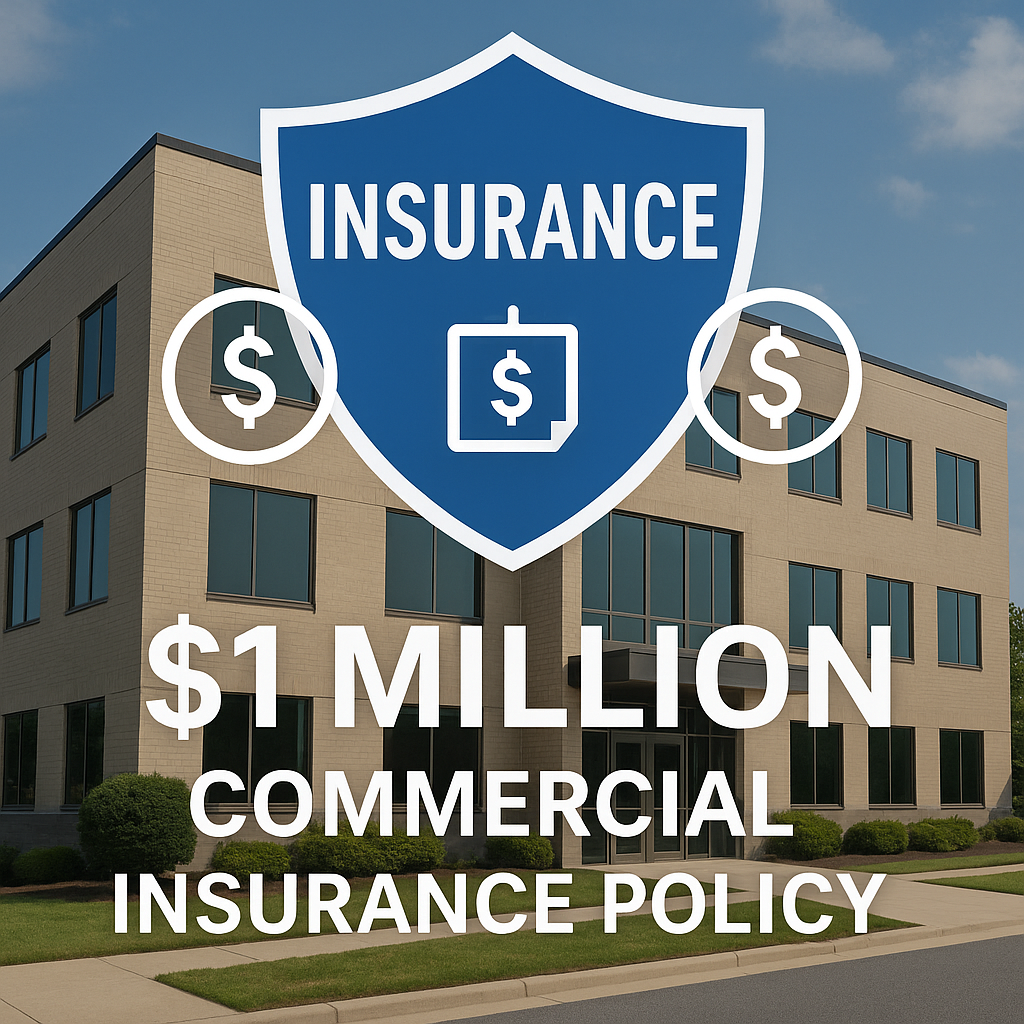Table of Contents
Understanding the Cost of a $1 Million Commercial Insurance Policy
future, regardless of its size or industry. This level of coverage is specifically designed to protect against high-cost claims, lawsuits, or unexpected disasters that could otherwise cripple operations. For many business owners, it’s not only a wise investment but often a legal or contractual necessity that helps preserve assets, reputation, and operational continuity in times of crisis.
Determining the monthly premium for this coverage is complex and influenced by several key variables, including industry-specific risks, daily operations, and a company’s claim history. To gauge risk levels, insurers evaluate factors like safety measures, years in business, and past losses. Comprehensive guides on $1M commercial insurance costs provide insight into average pricing, cost influencers, and coverage expectations. Understanding these elements empowers entrepreneurs to make informed, strategic decisions, balancing the potential financial impact of uncovered losses against the value of transferring that risk through robust insurance protection.
Businesses contemplating this level of coverage must look beyond the surface figures. Monthly premiums for a $1 million policy can range from as little as $300 up to $1,500 or more, depending on the business type, current market trends, and region. The broad spread is attributable to the diversity of sectors, business sizes, risk environments, and even geographic locations. For example, a tech startup in a major urban center may pay far less than a manufacturing plant operating in a high-risk floodplain or earthquake zone. Some business owners may also encounter additional expenses due to endorsements or policy riders, which are added to address unique risks their company faces.
Understanding the sources of these differences enables business owners to make informed decisions about their protection. Ultimately, demystifying these costs prepares them to budget wisely and prioritize strategies that could help lower their rates without sacrificing essential coverage. Rather than seeing insurance as a static expense, companies can identify options for adaptation and customization that align more closely with the evolving risk landscape they face.
Factors Influencing Insurance Premiums
The cost of acquiring a $1 million commercial insurance policy is never a flat rate across the board. Instead, insurance carriers tailor their pricing based on a careful assessment of the unique risks each business presents, taking into account every relevant operational detail. This process, known as underwriting, involves a mix of quantitative data analysis and qualitative judgment. Knowing the main factors at play not only helps business owners negotiate premiums but also highlights areas where strategic improvements could make a significant financial difference for the long term.
- Industry Risk: Insurance providers categorize different industries by the frequency and severity of claims typically associated with their operations. Professions considered high-risk—such as construction, healthcare, or manufacturing—are generally assigned higher premiums due to their increased exposure to liability and accident claims. For example, a construction company may face premiums as high as $2,627 per year for $1 million in coverage. In comparison, lower-risk fields such as dentistry might secure similar coverage for just $728 annually. Such differences underline how industry type profoundly impacts insurance rates, especially as insurers learn from historical data about which industries are most often the subject of claims.
- Business Size and Revenue: The sheer scale of a business—including the number of employees, annual revenue, and size of operations—carries significant weight in determining premiums. Large companies tend to pay more because a greater workforce, higher sales, and more complex operations present a heightened risk of both frequent and costly claims. Small businesses, in contrast, often enjoy more modest rates, provided their exposures are limited and operations are relatively straightforward. Premiums are often adjusted upward if the business takes on new contracts, expands its services, or grows in other ways that increase liability potential.
- Location: Where your business operates can dramatically affect insurance rates. Companies located in areas that are vulnerable to natural disasters—such as hurricanes, earthquakes, or floods—or those in regions with elevated crime rates may experience higher premiums. For example, businesses in Texas should expect to pay annually between $1,000 and $3,000 per million dollars of coverage, largely due to the heightened regional risks present in the area. The impact of location demonstrates the value of understanding both natural and socioeconomic risks associated with your specific geography and how proximity to emergency response resources or municipal codes can also affect premium rates.
- Claims History: Carriers analyze your business’s history of insurance claims to gauge risk. Frequent or substantial claims signal to insurers that your company is more likely to experience future losses, which can raise your premium. Conversely, maintaining a clean claims record can unlock better rates and establish your business as a relatively safe candidate for coverage. Regularly reviewing why claims occurred can provide actionable insights into process improvements or investment in better safety measures, increasing insurability in the future.
Average Monthly Costs by Policy Type
While various individual factors ultimately dictate what you pay, it helps to understand typical premium benchmarks for common commercial insurance products. This knowledge lets business owners set realistic expectations and budget more accurately when shopping for policies. Researching average costs beforehand gives companies leverage in negotiations and prevents unpleasant surprises during underwriting or renewal.
- General Liability Insurance: This foundational policy offers critical protection from the most common business liabilities, such as bodily injury or property damage claims. A $1 million general liability policy costs about $69 monthly on average, but actual premiums can swing based on the inherent risks in your field and claims trends in your area. Depending on your industry and business characteristics, costs can fluctuate—a crucial point for new or growing businesses to anticipate.
- Professional Liability Insurance: For enterprises that provide advice, design work, or other specialized services, professional liability insurance is indispensable. This policy covers claims stemming from alleged errors or negligence and averages around $37 per month for $1 million of coverage. The relatively low cost compared to the potential size of legal settlements makes professional liability coverage a high-value proposition for both startups and established firms who could otherwise face financially crippling lawsuits.
- Business Owner’s Policy (BOP): For small businesses seeking comprehensive coverage at a cost-effective rate, a BOP combines general liability and commercial property insurance under one premium. This bundled approach results in an average monthly price of about $85, making it a favored option among many business owners looking to streamline their expenses while enhancing protection. By grouping coverages, small businesses often enjoy greater convenience and cost transparency.
These cost ranges serve as a reference point for most business owners. However, specific premiums can land higher or lower depending on risk profile, claims experience, and additional endorsements added for specialty coverage. Always consider reviewing the fine print and consulting with an insurance professional to understand what is and isn’t included in these standard rates.
Strategies to Manage Insurance Costs
There are many concrete steps business owners can take to keep their insurance investments optimized and cost-effective. By approaching commercial insurance with a strategic mindset, companies can not only find the right level of protection but also unlock potential savings year after year. Rather than treating insurance as a static purchase, proactive management allows businesses to control expenses as their needs change and the risk environment evolves.
- Implement Risk Management Practices: Keeping your workplace safe is not just good for employees—it’s also an effective way to contain insurance costs. Required employee safety training, clear protocols for hazardous materials, regular equipment inspections, and investment in protective technologies like security cameras or fire alarms can all lead to fewer claims and possible premium discounts. Insurers often provide better rates to companies that proactively address hazards and document their risk mitigation strategies, particularly when improvements result in measurable reductions in claims rates.
- Bundle Policies: Consolidating your coverages into a Business Owner’s Policy or similar package can lead to meaningful discounts and lower administrative burdens. Insurance carriers frequently reward businesses that streamline their policies by offering a lower combined premium than they would for standalone policies, making this an attractive option for cost-conscious owners. Bundling also simplifies renewal, payments, and claims handling by giving business owners a single point of contact for their coverage needs.
- Regular Policy Reviews: The needs of a business can evolve rapidly. By scheduling regular evaluations with your insurance broker or carrier—ideally at least annually—you can ensure your coverage remains appropriate for your current operations. These reviews provide opportunities to remove unnecessary add-ons, adjust coverage limits, and identify gaps, all of which can contribute to a more efficient premium structure. Periodic reviews also ensure compliance with local laws and regulations that may affect your insurance requirements.
For the most tailored and effective strategies, consult an insurance professional with deep knowledge of your industry and geographic market. They can help you navigate product options, local market dynamics, and opportunities for lowering your premium through targeted risk management. Independent brokers are especially valuable resources when comparing offerings from multiple carriers, helping businesses avoid over- or under-insuring themselves.
Conclusion
For today’s business owner, understanding what influences the price of a $1 million commercial insurance policy is more than just a budgeting exercise—it’s a fundamental step in securing the future of their company. By recognizing the primary factors that drive insurance rates, leveraging industry benchmarking data, and applying proactive management strategies, businesses can lock in comprehensive protection at a competitive rate. For those seeking a deeper dive, the guide to $1M business liability insurance costs remains a valuable resource for real-world examples and expert analysis.
In the end, business insurance is an investment in confidence and security. With the right information and approach, companies can navigate the complexities of coverage and emerge better equipped to thrive, regardless of what unexpected events may come their way. By staying informed and working with qualified professionals, business owners can protect what they’ve built and confidently pursue future opportunities.




